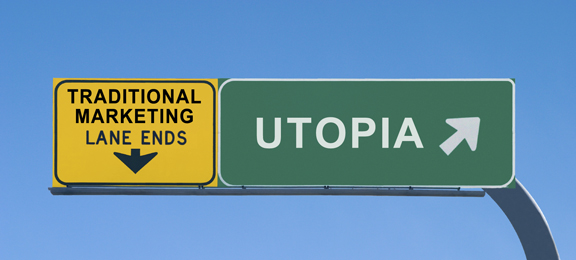 Darn those Baby Boomers! If they would just get out of the
workforce, everyone would embrace the new technology and there would be one way
to market everything! But for now, the old hanger-onners are holding the rest
of us back from marketing that is 100% driven by a phone app. Is that the way
you feel about marketing these days? The old methods can’t seem to fade into
the sunset as long as there are those traditionalists that respond to marketing
methods such as direct mail, TV commercials, print advertising, outdoor
signage, printed coupons, and paper, paper, paper! If you have the utopian view
that there will be marketing harmony when there is no more marketing method diversity,
let me pop the bubble you are living in and take you down a road called
realism.
Darn those Baby Boomers! If they would just get out of the
workforce, everyone would embrace the new technology and there would be one way
to market everything! But for now, the old hanger-onners are holding the rest
of us back from marketing that is 100% driven by a phone app. Is that the way
you feel about marketing these days? The old methods can’t seem to fade into
the sunset as long as there are those traditionalists that respond to marketing
methods such as direct mail, TV commercials, print advertising, outdoor
signage, printed coupons, and paper, paper, paper! If you have the utopian view
that there will be marketing harmony when there is no more marketing method diversity,
let me pop the bubble you are living in and take you down a road called
realism.
Every age group has their preferences. That includes their
preferred way of communication. That preferred method of communication is
established pretty early in our adult years – typically by the time we are
18-25 years old. We call this the coming of age period of life. After 25, we
all are pretty well wired with likes and dislikes that we take with us the rest
of our lives. For instance, if you grew up in a time when you went to a bricks
and mortar store and talked to a sales person before a transaction, you might
have a hard time with the younger set that prefers not to make eye contact with
anyone unless they are Skyping with them. They would rather make all purchases online,
preferably with a mobile device, through Amazon, and without talking to anyone
verbally during the purchase. If there is any talking to be done, it will be
done with an emoji ;)
If you think you can tie up marketing for now and the future
by putting it all online, think again. Marketing on social media, search
engines, and web sites is a great method to get in front of the Millennial
demographic, but there will be a new method with the new generation… you can
count on that. When we decide our generation’s preferred method of
communications, we typically kick the old method to the curb. Smart companies understand
how this preference for communications can be used as a method to market to one
particular group or another. For instance, American Telephone and Telegraph is
the world’s largest telecommunications corporation. You know them as AT&T.
They haven’t had a strong demand for telegraphic services for many decades.
They also haven’t had a big need for landline telephone service. They are in high
demand for mobile services that can stream lots of data. That streaming
capacity is an opportunity for marketing, but it will not last past the present
generation. The next generation will want something new. Just like the Boomers
who preferred the telephone and dissed the telegraph, there will be something
new that makes the Smartphone a museum piece.
If you are being smart, you will take the time to really
understand the preferences of each age demographic you are targeting with your
marketing. The method you use needs to match these preferences. And as new
generations of young adults come of age, make sure you are noting the changing
opinions of the methods you are using. You cannot use just one method, there
are too many different age groups active at any given time. Thinking you can
put all your marketing chips in just one method’s basket will leave you wanting
for customers left on the outside of your choice and their preferences. It is a
recipe for failure.
If I were to predict what the next generation will prefer, I
would tell you that these things tend to cycle. For instance, is text messaging
that much different than the telegraph that was cutting edge technology 100
years ago? Communications methods are going to change; it is inevitable. So don’t
get too comfortable with all your current methods. They are good for now, but
they will need to change in the future. Marketing always attaches itself to the
next best communications method that is picked up by a new generation. Keep an
eye on this for your marketing success.